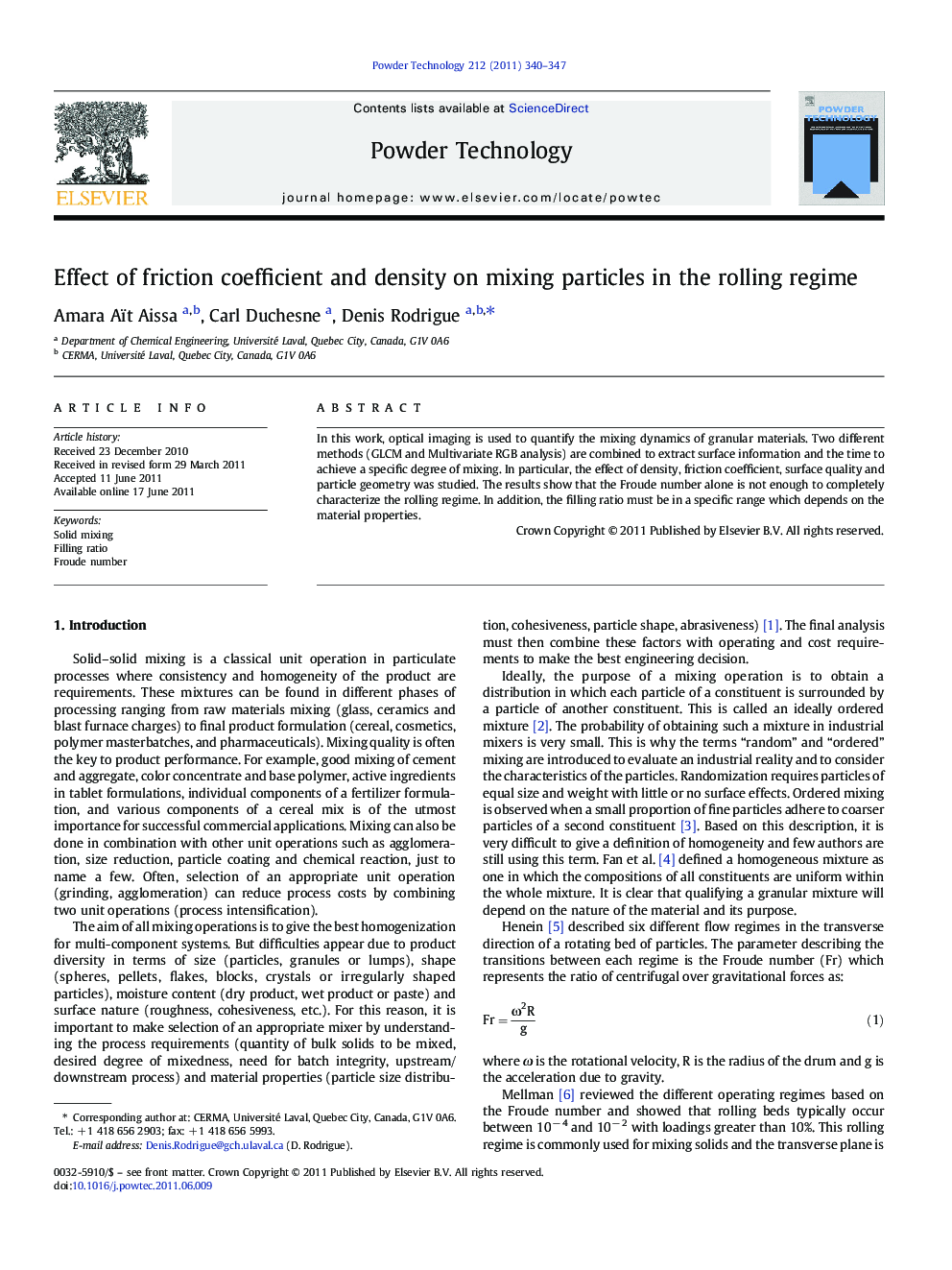| Article ID | Journal | Published Year | Pages | File Type |
|---|---|---|---|---|
| 237531 | Powder Technology | 2011 | 8 Pages |
In this work, optical imaging is used to quantify the mixing dynamics of granular materials. Two different methods (GLCM and Multivariate RGB analysis) are combined to extract surface information and the time to achieve a specific degree of mixing. In particular, the effect of density, friction coefficient, surface quality and particle geometry was studied. The results show that the Froude number alone is not enough to completely characterize the rolling regime. In addition, the filling ratio must be in a specific range which depends on the material properties.
Graphical abstractThis paper reports on mixing a binary particle bed of small and large polymer powders in a rotating drum. The effects of Froude number, particle diameter, filling ratio and initial particle concentration on segregation and mixing degree are presented and a dynamic model is proposed to determine the optimum mixing time.Figure optionsDownload full-size imageDownload as PowerPoint slideResearch highlights► Video imaging is used to study the mixing of small particles in a rotating cylinder. ► The effect of processing conditions on mixing dynamics is presented. ► The effect of particle density and friction coefficient is determined. ► The optimum filling range to get the rolling regime is determined.
